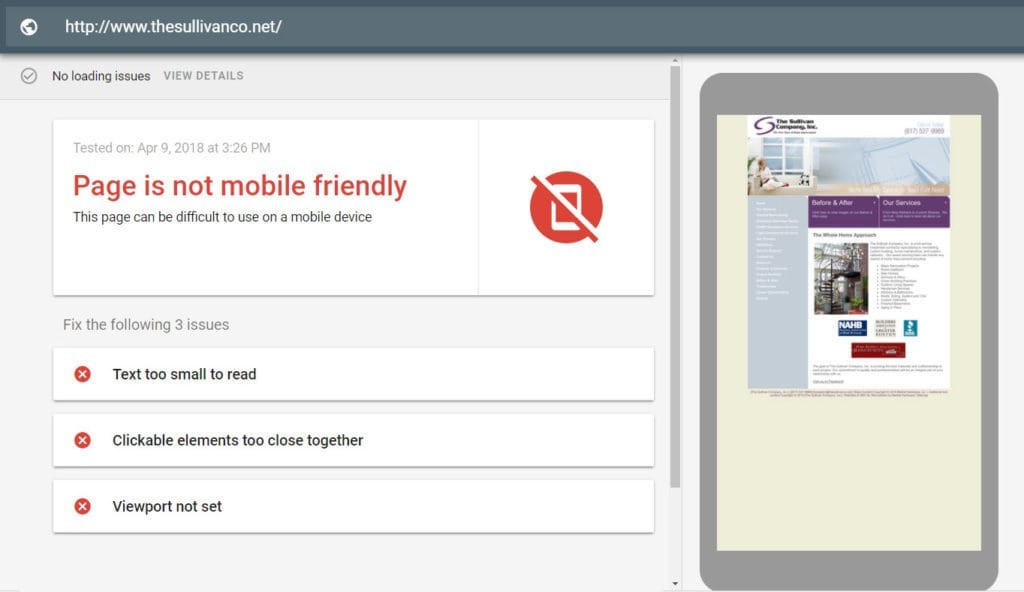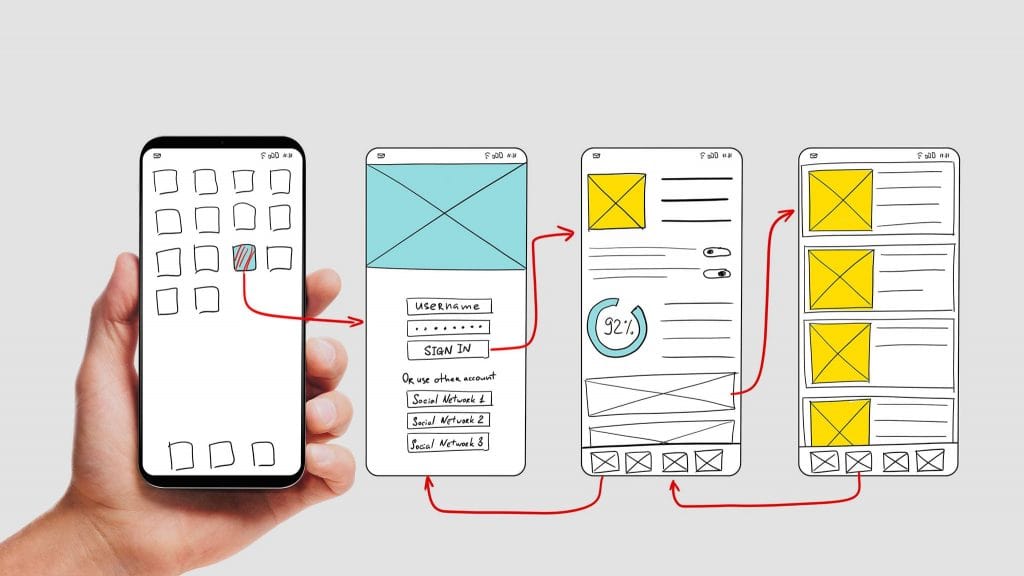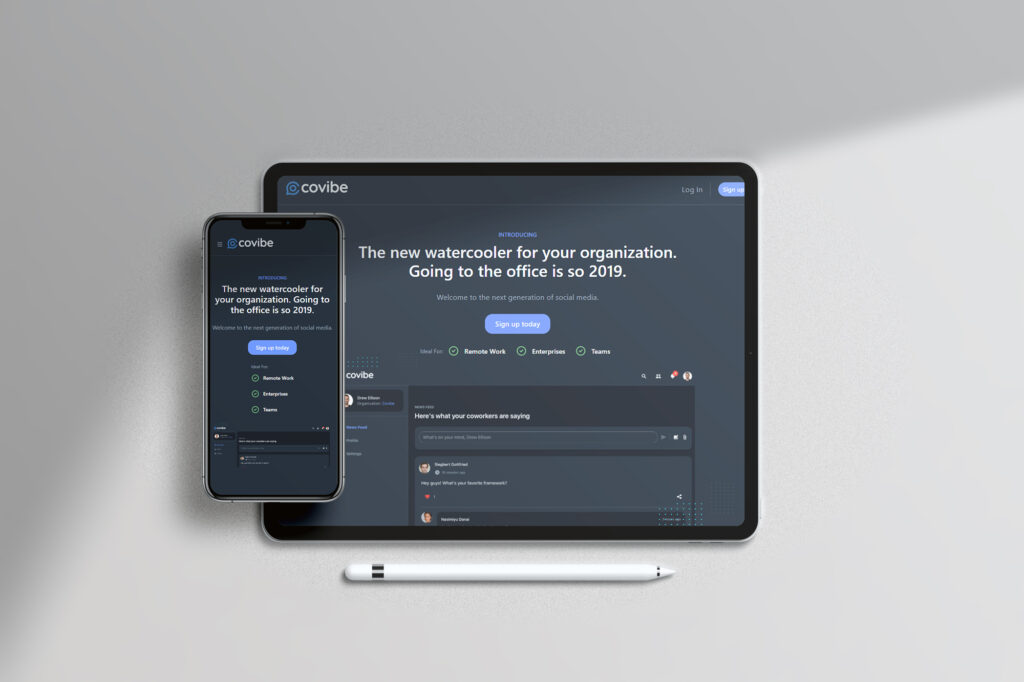The Importance of Having a Mobile-Friendly Website
In an era where smartphone usage continues to surge, businesses must recognise the importance of catering to this rapidly growing demographic. With most internet users now accessing the web through their mobile devices, the demand for seamless and effortless navigation on smaller screens has become paramount. Mobile-friendly websites provide a better user experience and directly impact a company's bottom line by influencing customer retention, engagement, and conversion rates.
This article will explore various aspects of mobile-friendly website design, including its benefits, essential features, and best implementation practices. We will also discuss the potential consequences of neglecting this crucial aspect of web development and how businesses can assess and improve their websites' mobile performance. By emphasising the importance of a mobile-friendly website, this article provides a comprehensive guide for companies and organisations seeking to adapt and thrive in the ever-evolving digital landscape.
Table of Contents
What is a Mobile-Friendly Website?

A mobile-friendly website is a digital platform tailored and optimised for seamless browsing and interaction on mobile devices, including smartphones and tablets. This optimisation ensures that the website's layout and content dynamically adapt to the reduced screen sizes of mobile devices, providing users with a smooth and convenient browsing experience that doesn't require constant adjustments or struggle.
To qualify as a genuinely mobile-friendly website, it should encompass the following key features:
- Readable text without the need for zooming: The font size, type, and layout should be designed in a manner that allows users to read the content with ease, eliminating the need to pinch or zoom in on the text. This ensures that the user experience remains consistent and enjoyable across various devices.
- Sufficient space for tap targets: Touchscreen devices rely on accurate tapping and swiping gestures. A mobile-friendly website must provide ample space around buttons, links, and other interactive elements to minimise the likelihood of accidental taps and improve the overall user experience.
- Absence of horizontal scrolling: Mobile-friendly websites should be designed with a responsive layout that automatically resizes and reorganises the content to fit the device's screen. This eliminates the need for horizontal scrolling, allowing users to navigate through the site using vertical scrolling alone seamlessly.
- Fast loading times: Mobile users often access websites on the go and may have limited data plans or unstable connections. A mobile-friendly website should be optimised for quick load times, ensuring that pages and content load efficiently without frustrating delays or excessive data consumption.
- Straightforward, concise navigation: Mobile users typically have a shorter attention span and limited screen space for navigating complex menus. To cater to this, a mobile-friendly website should feature a straightforward, intuitive navigation system that allows users to quickly find the information they're looking for without feeling overwhelmed.
Why is Having a Mobile-Friendly Website Important?

1 – Improved User Experience
With the widespread use of smartphones and tablets, users increasingly browse the web on their mobile devices. Therefore, it is critical to ensure your website is easily accessible and navigable on smaller screens. Suppose users have difficulty accessing your content or navigating your site on mobile devices. In that case, they will likely leave your site and look for a competitor who provides a better user experience.
According to a survey conducted by Google, 74% of users are more likely to return to a mobile-friendly website in the future. This indicates that users place a significant value on a website's mobile-friendliness and are likelier to engage with the content and products offered by a business that provides a seamless mobile experience.
On the other hand, 79% of users will leave a site that is not mobile-friendly and look for another site that meets their needs. This highlights the importance of optimising your website for mobile devices. Failing to do so can result in losing potential customers and revenue.
2 – Increased Mobile Traffic
Oberlo said mobile devices accounted for 52% of all website traffic worldwide in 2023. This statistic highlights the significance of optimising a website for mobile devices to reach a wider audience.
By designing your website with mobile users in mind, you can provide a more user-friendly experience and increase engagement with potential customers. A mobile-friendly website will be easy to navigate, load quickly, and provide a seamless experience across different devices. This can significantly improve your chances of converting mobile users into customers.
In addition, a mobile-friendly website can also improve your search engine rankings. Google has stated that mobile-friendliness is a ranking factor, and websites not optimised for mobile devices may rank lower in search results. Ensuring your website is mobile-friendly can improve your visibility and attract more traffic.
3 – Better Search Engine Rankings
As previously mentioned, Google uses the mobile version of a website's content to index and rank pages. This means that if your website isn't optimised for mobile devices, it may not appear as prominently in search results, and you may miss out on valuable search engine traffic.
A mobile-friendly website can help improve your search engine rankings by providing a better user experience for mobile users. This includes faster loading times, easy navigation, and optimised content for smaller screens. By improving the user experience, search engines are more likely to view your website as relevant and valuable to users and rank it higher in search results.
Moreover, a mobile-friendly website can increase your visibility in local search results. According to Google, over 50% of all searches have a local intent, and mobile devices are increasingly becoming the primary means of accessing local information. Optimising your website for mobile devices can improve your chances of appearing in local search results and attract more local customers to your business.
4 – Competitive Advantage
A mobile-friendly website can give you a competitive advantage over other businesses in your industry by providing a better user experience. Users are more likely to engage with a website that is easy to navigate, loads quickly, and provides a seamless experience across different devices. By providing a positive user experience, you can stand out from the competition and increase the likelihood of users choosing your business over others.
Furthermore, a mobile-friendly website can attract more mobile traffic, significantly increasing your chances of success. According to Google, mobile users are more likely to purchase or take action after visiting a mobile-friendly website. This means businesses that optimise their website for mobile devices can increase their chances of converting mobile users into customers.
In addition, having a mobile-friendly website can also improve your brand reputation and credibility. A website that is not optimised for mobile devices can give the impression that your business is outdated or not in touch with the needs of modern consumers. On the other hand, a mobile-friendly website can provide the belief that your business is modern, innovative, and customer-focused.
How to Create a Mobile-Friendly Website

Now that you understand the importance of a mobile-friendly website let's explore how to create one for your business.
1 – Use Responsive Design
Responsive design is a modern approach that allows websites to adapt automatically to various screen sizes and device types. With responsive design, your website will look great and function seamlessly on any device, whether a desktop computer, smartphone, or tablet.
One of the most significant benefits of using responsive design is improved usability. Optimising your website for different devices can give visitors a better user experience, regardless of their device. With responsive design, your website's layout and content will adjust automatically to fit the screen size, making it easier for users to navigate and access your content.
Responsive design can also improve your website's search engine rankings. Google has stated that mobile-friendliness is a ranking factor, and websites not optimised for mobile devices may rank lower in search results. By using responsive design, you can ensure that your website is mobile-friendly and improve your search engine visibility.
Furthermore, using responsive design can also save you time and money. Instead of creating separate websites for different devices, you can have one that automatically adapts to different screens and device types. This can save you the time and cost of developing and maintaining multiple websites and allow you to focus on other aspects of your business.
2 – Optimise Your Images
Website speed is a critical factor in providing a positive user experience for visitors. Slow load times can frustrate users and cause them to abandon your website. One of the common culprits of slow load times is large images. Large images can significantly slow down your website's load times, leading to a poor user experience.
To prevent this, optimising your images for the web is crucial, reducing their size without sacrificing quality. Image optimisation involves compressing images to reduce their file size, which can significantly improve your website's load times.
Several tools are available to help you optimise your images for the web. Adobe Photoshop is a popular image editing software that can be used to optimise images for the web. It allows you to reduce the file size of your images while maintaining their quality.
Another popular tool for optimising images is TinyPNG. TinyPNG is an online service that uses smart lossy compression techniques to reduce the file size of your images without sacrificing quality. It supports PNG and JPEG file formats and can significantly reduce file sizes without affecting image quality.
In addition to using image optimisation tools, there are other steps you can take to improve your website's load times further. For example, you can leverage browser caching, compress your website's code, and reduce your website's number of HTTP requests.
3 – Simplify Your Navigation
One of the most critical factors in simplifying your website's navigation is to reduce the number of menu items. This can be achieved by identifying the essential pages you want your users to access and removing unnecessary menu items. This approach can significantly reduce the clutter in your navigation menu and make it easier for mobile users to navigate your site.
Organising your menu items into categories is another effective way to simplify your website's navigation. Grouping similar pages under relevant categories can help mobile users find what they're looking for quickly and easily. This approach can also reduce the number of menu items, making your navigation menu more manageable for mobile users.
Using clear and concise labels for your menu items is also essential for simplifying your website's navigation. The labels should accurately describe the content users can expect when they click on a menu item. This approach can reduce confusion and make it easier for mobile users to find what they want.
Implementing a search bar is another effective way to simplify your website's navigation. A search bar allows mobile users to find specific content on your website quickly and easily without navigating through your entire website. This approach can significantly improve the user experience for mobile users, making it more likely that they will return to your website in the future.
4 – Use Mobile-Friendly Fonts and Text Sizes
Choosing the right font and text size is crucial to designing a mobile-friendly website. Mobile devices have smaller screens, making it essential to select fonts and text sizes that are easy to read on smaller screens.
It is essential to avoid using tiny font sizes and fancy fonts that can be difficult to read on smaller screens. Small font sizes can strain the eyes of mobile users and make it challenging to read the content on your website. Fancy fonts, however, can be distracting and make it difficult for mobile users to focus on the content.
Instead, it is recommended to use clean and simple fonts that are easy to read. Sans-serif fonts, such as Arial and Helvetica, are excellent choices for mobile devices because they are easy to read and look great on smaller screens.
In addition to choosing the right font, it is essential to ensure that the font size is large enough to be read without zooming in. A font size of at least 16 pixels is recommended for body text on mobile devices. This size allows users to read the content on your website without having to zoom in or strain their eyes.
Furthermore, ensuring adequate contrast between the font and background colours is essential. A lack of contrast can make it difficult for users to read the content on your website, particularly for those with visual impairments.
5 – Test Your Website on Different Devices

Testing your website on different devices is essential to ensure it looks and functions correctly on all mobile devices. With so many different devices and screen sizes available, it is crucial to test your website thoroughly to ensure a seamless user experience across other devices.
One of the most popular tools for testing mobile-friendliness is Google's Mobile-Friendly Test. This tool allows you to test your website on different mobile devices and screen sizes to optimise it for mobile users. The test analyses various aspects of your website, such as page load time, font size, and mobile viewport settings, to determine whether it is mobile-friendly or not.
Another popular tool for testing your website on different devices is BrowserStack. This tool allows you to test your website on other browsers and devices, including smartphones and tablets. It provides a comprehensive testing environment enabling you to test your website's functionality, performance, and design on different devices and operating systems.
By testing your website on different devices, you can identify any issues and make the necessary changes to ensure your website is fully optimised for mobile devices. For example, you may discover that some aspects of your website are not displaying correctly on specific devices or that the font size is too small, making it difficult for users to read the content.
Moreover, testing your website on different devices can also help you identify improvement opportunities. For instance, you may discover that your website's load times are slower on specific devices or that certain pages are not optimised for mobile users.
6 – Minimise Pop-Ups and Ads
Pop-ups and ads can be a significant annoyance for mobile users, and they can significantly impact the user experience on your website. Mobile users have less screen space to work with, and pop-ups and ads can take up valuable screen real estate, making it difficult for users to navigate and access your content.
To avoid this, minimising the number of pop-ups and ads on your website is crucial. Limiting the number of pop-ups to one or two per session is recommended, ensuring they are relevant to the user's needs. Similarly, it is essential to use ads sparingly and ensure they do not interfere with users' ability to navigate and access your content.
Moreover, it is crucial to ensure that pop-ups and ads are designed to be mobile-friendly. For instance, if you use pop-ups, make sure they are easy to close on mobile devices. It would help if you used only partial-screen pop-ups or pop-ups that are easy to complete, as they can be frustrating for users.
Another effective strategy is to use contextual advertising instead of traditional display advertising. Contextual advertising uses the content of your website to determine which ads to display to users. This approach can make the ads more relevant and less intrusive for users.
7 – Improve Your Page Speed
Page speed is critical in providing a positive user experience on mobile devices. Slow page speeds can lead to higher bounce rates, lower user engagement, and poor search engine rankings. In today's digital age, where mobile devices are the primary source of website traffic, optimising your website's page speed for mobile users is essential.
One effective way to improve your website's page speed is to use tools like Google's PageSpeed Insights. This tool comprehensively analyses your website's load times and provides recommendations for improving your website's speed. It analyses various aspects of your website, including server response time, image optimisation, and browser caching, to identify any issues slowing down your website.
Using tools like Google's PageSpeed Insights, you can identify any issues affecting your website's page speed and make the necessary changes to improve your load times. For example, you may discover that your website's images are not optimised for web use or that your server response time is slow, leading to slow load times.
Another effective strategy for improving your website's page speed is to use a content delivery network (CDN). A CDN is a network of servers distributed worldwide, allowing your website's content to be cached and delivered from a server closer to the user. This approach can significantly reduce your website's load times, particularly for geographically distant users from your server.
Conclusion
A mobile-friendly website is no longer a luxury but a necessity for businesses that want to stay competitive in today's digital landscape. By providing a better user experience, attracting more mobile traffic, and improving your search engine rankings, a mobile-friendly website can help you achieve your business goals and increase your chances of success.
To create a mobile-friendly website, you should use responsive design, optimise your images, simplify your navigation, use mobile-friendly fonts and text sizes, test your website on different devices, minimise pop-ups and ads, and improve your page speed.
By following these tips, you can create a fully optimised website for mobile devices that provides an excellent user experience for your visitors.
